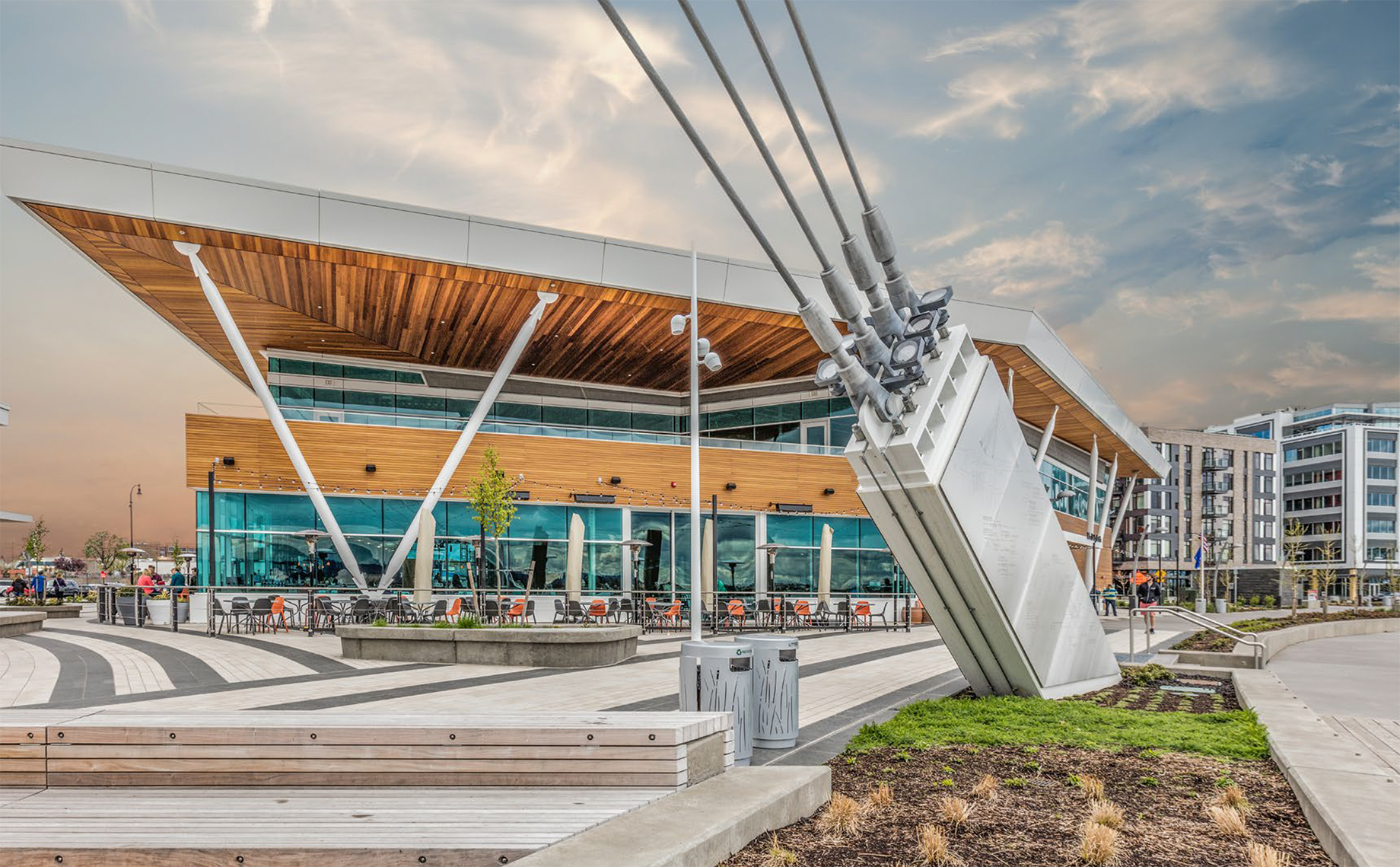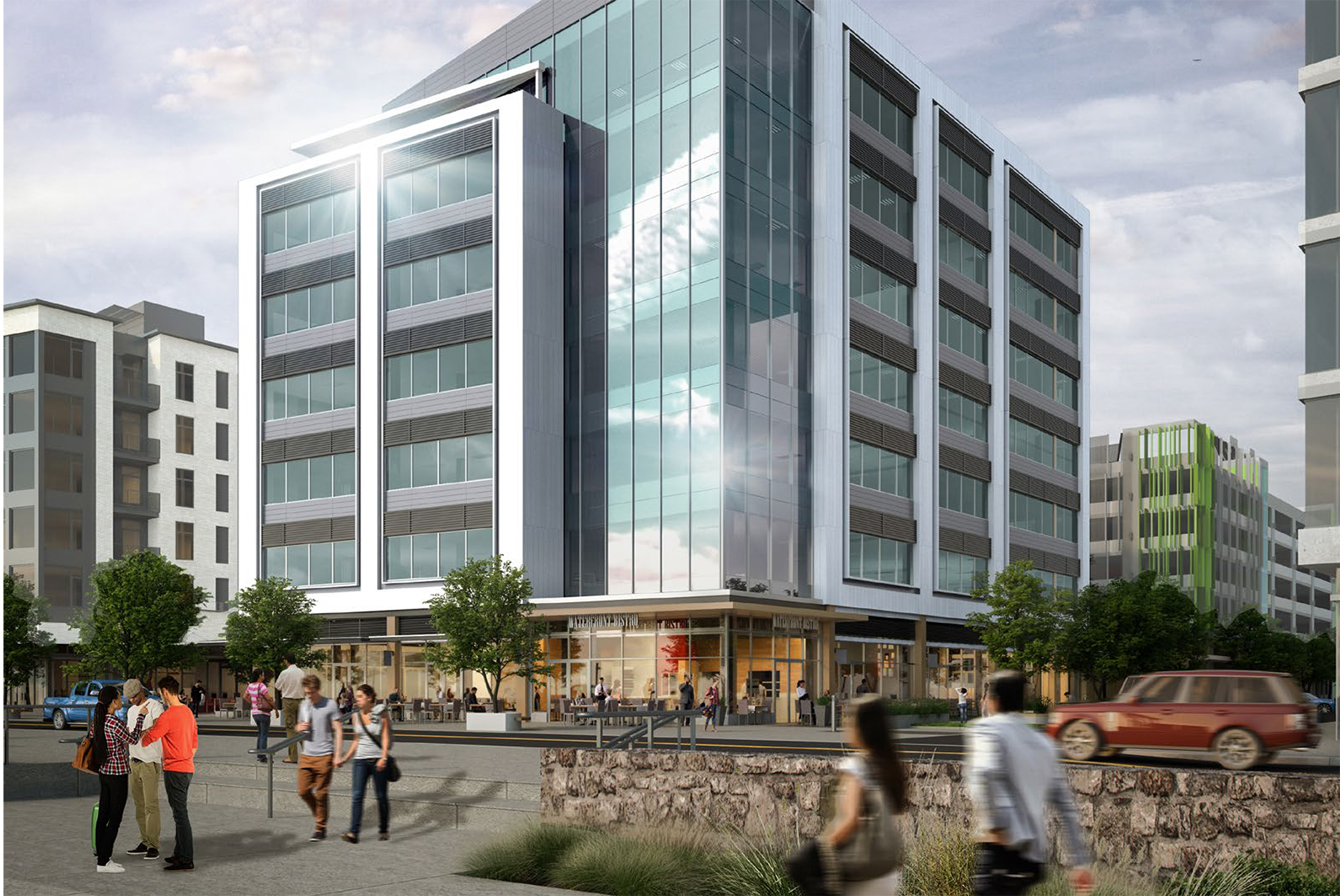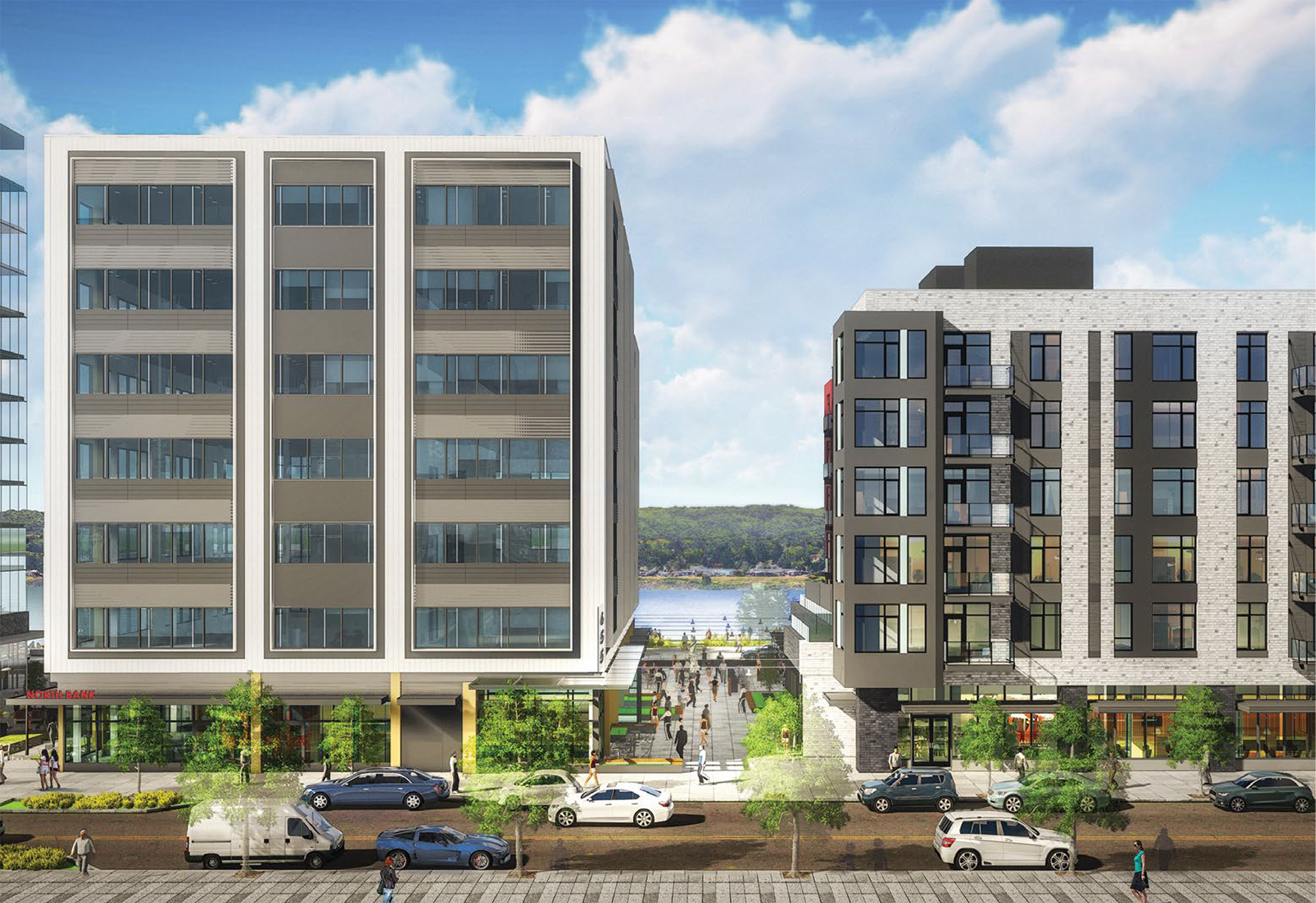Vancouver, Wash., has long existed in the shadow of its larger (some might say trendier, too) neighbor to the south, Portland, Ore. Gramor Development has set out to change that dynamic with its $1.5 billion, mixed-use project in Vancouver, one of the oldest cities in the state.

Thousands turned out to a grand-opening celebration last fall to see the initial elements of Gramor’s ambitious and long-awaited undertaking on Vancouver’s waterfront — including its two flagship restaurants (WildFin American Grill, and Twigs Bistro & Martini Bar) and a new, half-mile-long park along the banks of the Columbia River. The park’s focal point is a dramatic, V-shaped pier suspended from cables and projecting nearly 100 feet over the river, which separates Washington and Oregon.
Located on a 32-acre site that previously held a shuttered paper mill, this project, called The Waterfront Vancouver, is master-planned for roughly 3,000 apartments and condominiums, nearly 1.3 million square feet of class-A offices and about 250,000 square feet of retail and restaurant space. Gramor, based in nearby Tualatin, Ore., is its master developer. The project is quickly turning Vancouver into a bigger attraction in its fast-growing metro area.
“I thought, ‘What a way to get involved and completely change a community,’ ” said Barry Cain, Gramor’s president, recalling his reaction upon learning in 2005 of an opportunity to buy 28 acres along Vancouver’s riverfront from Boise, Idaho-based wood-products company Boise Cascade. Gramor teamed up with other local investors to form Columbia Waterfront LLC, which made the purchase in 2008. The entity also leases four adjoining acres from the Port of Vancouver. “We wanted to make this [site] a top-five destination in the Portland-Vancouver area,” said Cain, noting that the city of Vancouver “signed off on our vision and never backed away from it.”

One of the ways the city supported the project was working with Gramor to improve access to the Waterfront site, which is separated from the downtown by a raised train trestle that belongs to the BNSF Railway Co. At Gramor’s urging, the city contracted with a company to rebuild the trestle. The city also extended existing streets through access points beneath the new trestle and to the Waterfront. Gramor and its partners contributed to the roughly $45 million cost of the access project, completed in 2012. These changes were needed to create greater synergy between the downtown and the Waterfront, Cain says.
The city of Vancouver also supported Gramor’s plan to build an innovative public park at the Waterfront. Gramor brought in Vancouver, British Columbia–based landscape architecture firm PWL Partnership to design the seven-acre park. Columbia Waterfront donated the land to the city, contributed to the park’s $40 million cost and also helped the city raise the money. The group also helps pay for the park’s maintenance. Besides the green space, the park includes a trail connecting to another city-owned park, plus seating areas, a children’s play area, historical artifacts and a massive art installation and water feature, called Headwaters Wall, which focuses on the Columbia River watershed.
The park’s iconic pier — designed by acclaimed artist Larry Kirkland — evokes the hull and mast of a ship and serves as a symbol of the city’s reconnection to its waterfront, which has long been a community priority, according to Eric Holmes, Vancouver’s city manager. “We have a rich history of industry, commerce and culture that’s associated with our place on the shores of the Columbia River,” said Holmes. “We are looking for ways to connect with the river and embrace our past and future as a riverfront city.”

The park not only serves the growing numbers of people who live and work at the Waterfront and in the surrounding area, but it has also become a tourist attraction. The same can be said for the Waterfront’s growing collection of restaurants and local winery concepts. Earlier this year, Maryhill Winery opened a nearly 5,000-square-foot tasting room (as well as a special room for members of its Premium Wine Club) at the Waterfront. Two more Washington-based wineries are expected to open tasting rooms at the project in the fall. An upscale, 137-room Hotel Indigo is slated to open by the end of the year, along with an El Gaucho steak house and several other restaurants.
Even some Portland residents are crossing the river to dine at the Waterfront. Though Portland has a thriving food scene of its own, there are few opportunities there to dine along the water. Cain says he thinks the Waterfront’s collection of restaurants will grow to about 10 over the next several years, and then to about double that amount later. As foot traffic at the Waterfront grows, shops will open too, he says. “We wanted to do this [project] in a world-class manner,” said Cain, whose firm specializes in retail and mixed-used development and has completed projects that helped revitalize the affluent Portland suburb of Lake Oswego. “We didn’t want to come back 10 to 20 years later and feel that we wasted an opportunity.”
“ Vancouver’s central business district enjoyed an office vacancy rate of less than 7 percent in the first quarter of this year, according to Colliers International”
The Waterfront is already functioning as a catalyst for more investment in Vancouver — which was once plagued by high vacancy rates and other signs of economic distress. Things started to improve after local leaders began making renovations to Esther Short Park, buying properties around the historic square and inviting redevelopment of the parcels.
In the late ’90s and early 2000s, Vancouver enjoyed a wave of investment, including the development of apartment and condominium projects and the city-owned Hilton hotel and convention center. There has been another surge of investment activity in recent years, much of it concentrated in and around the Waterfront. Vancouver’s central business district enjoyed an office vacancy rate of less than 7 percent in the first quarter of this year, according to Colliers International.
“The kind of investment we’ve seen at the Waterfront has created substantial momentum and confidence in the market,” said Holmes. “So other projects are moving forward and breaking ground.”
By Anna Robaton
Contributor, Commerce + Communities Today